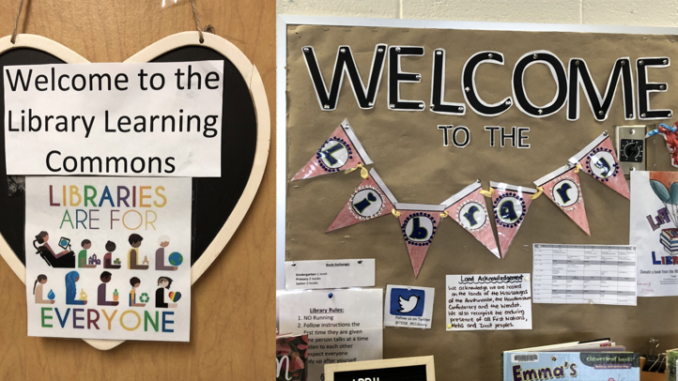
By Rabia Khokhar
In the summer of 2018, I took the Additional Qualification Teacher-Librarianship Part 1 course with Diana Maliszewski. As a final independent project we were asked to choose an inquiry question of our own choice, research it and then present it to our classmates. Being passionate about equity and representation in children’s literature, my question was “How do I design a Library Learning Commons (LLC) through an equity lens?”.
What an absolute privilege to have my dream come true when Andreas Ghabrial, my current Principal hired me as a Long Term Occasional Teacher (LTO) at the Toronto District School Board’s (TDSB) Indian Road Crescent Public School.
When I started this LTO in September, I did not know the extent of how it would connect so deeply to my identity and my commitment to equity and social justice. I did not know how this library would become a personal counter narrative, how in many ways it would become a way to ‘speak back’ to my own schooling experiences as a racialized visible Muslim woman. In my schooling experiences, I was scarcely represented and when I was it was often a misrepresentation through the perpetuated of the single story narrative of Muslim women (oppressed, needing to be saved and uneducated). I was reminded by a colleague that “we teach who we are”, knowing this I think it is critical and vital that we are in a constant state of reflection as we critically think about how ‘who we are’ impacts how we teach. Situating the ‘self’ within our work is the first step of critically thinking about equity and diverse representation in our LLC.
I believe in the powerful and transformative role school libraries play in creating an inclusive world by raising kind, engaged, informed and critical citizens. As a new teacher-librarian, I was eager for students to build their own positive personal narratives through their experiences in the library. A vision that aligns with your administrator’s is very important for the work of the library learning commons, which is why having Andreas Ghabrial as both principal and mentor has been so phenomenal. Our shared vision this year was to design our LLC through an equity lens, diversifying our book collection and making our library the “heart” of our school, or at least one of the hearts! To realize that vision we explored the importance of equity and diverse representation in the library learning commons. Our journey illustrates what putting that into practice can look like in a school community.
Exploring Equity Questions and Diverse Representation:
Realizing the Promise of Diversity: Ontario’s Equity and Inclusive Education Strategy defines equity as:
A condition or state of fair, inclusive, and respectful treatment of all people. Equity does not mean treating people the same without regard for individual differences (page 6).
Leading Learning: Standards of Practice for School Library Learning Commons in Canada states the need for inclusive school libraries:
Our school libraries should reflect our common values of equity, diversity, and cultural identity as well as best approaches in the educational and library professions. They should be contextually relevant to student need and success, and built, cared for, measured, renewed and sustained on an ongoing basis by their learning communities. We should position school libraries to lead learning for the future.
Using these documents to ground the work we wanted to do, we thought critically about how it would actually translate into our LLC. What does being fair, inclusive and respectful look like in our LLC? How is it connected to equity and representation? We knew if we were thinking of designing a space with an equity lens, we wanted to constantly ask and be conscious of the following questions:
- Who are the learners in our school?
- Who are their families?
- Are they reflected in our space? Who are we affirming? Who are we silencing?
- How will they be reflected?
But as we thought deeply we learned that equity also asks:
- Who is not in this building? Why?
- Are they represented in our space?
- How will they be authentically and respectfully reflected and represented in our space?
- How will we teach our students about diverse lived experiences?
With these questions in our mind we decided that in our space equity and diverse representation would be focused on thinking critically about the:
- Library physical environment
- Book Collection (print)
- Displays (Environment as the 3rd teacher)
- Presence of Student Voice
Applying Equity and Diverse Representation Focus Areas in our LLC
In our application we focused on four key areas where we hoped to make transformations. I will share some of the questions and ideas that prompted our thinking and pictures of our LLC.
Library Arrangement:
For our LLC we decided to have different learning zones. Our learning zones are: Whole group meeting and teaching area, Computer lab, technology zone, Reading Nook and Small group work tables. The following questions informed our thinking:
- What does our library arrangement and layout say about how we view teaching and learning?
- Are there different zones that facilitate different forms of teaching and learning?
- What does our space say about collaboration? Does it allow for collaboration?
- Does our space allow for differentiated teaching and learning?
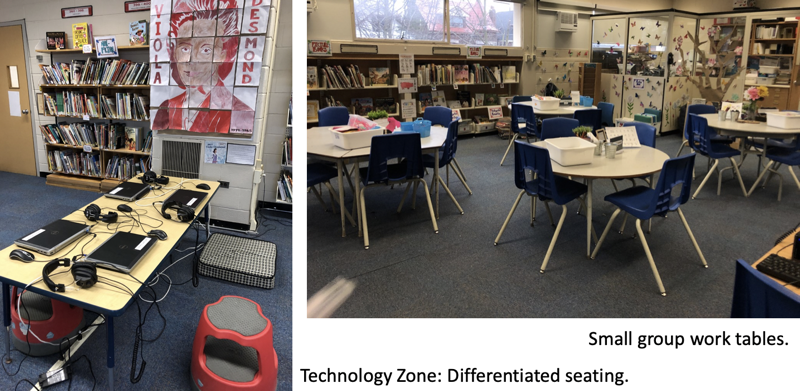
Book Collection:
We focused our attention on our print collection this year. We wanted to continue promoting a love for reading. We were very fortunate that part of our yearly library budget was spent on purchasing new books with diverse lived experiences at TDSB’s Purchasing Fair in the fall. As well, we were incredibly grateful that our Parent Council Equity Committee had a fundraiser for our library! They paired up with an independent bookstore in our community, Another Story Bookshop and we created a booklist of books we wanted for our library. Together with the purchasing fair and the Parent Council Equity Committee Fundraiser we have been able to put almost 200 new books in our library!
To critically think about the books we were bringing into our LLC, we referred to Professor Rudine Sims Bishop’s concept of Mirrors, Windows and Sliding Glass Doors. In a book that is a mirror students’ see a reflection of themselves and their experiences. In a window book they will learn about those that are different from them respectfully and authentically. In a sliding glass door book students with understand the similarities and differences between themselves and the characters which will lead to a new understanding. With this in our mind, we were incredibly critical when purchasing new books and asked the following questions:
- Does this book counter ‘single’ stereotypical stories?
- Does it expand the stories that we know?
- Who is writing this story? About who?
- How are the characters represented?
- Does it present an ‘everyday universal experience’?
- Will our students enjoy this story?
- How and what does this book add to our whole collection?
- How do our books promote equity and diverse representation?
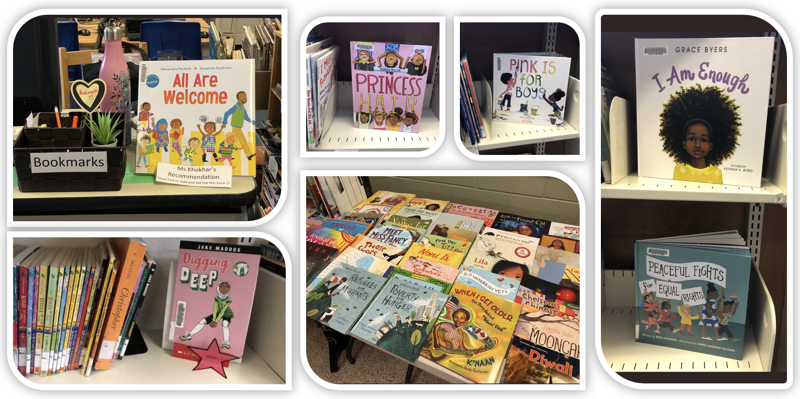
Displays (Environment as the 3rd teacher):
When thinking critically about the displays in our LLC and the environment as the 3rd teacher we wanted to think about the messages our space would promote. We wanted our LLC to be a welcoming, inclusive, safe space where diverse lived realities and experiences are represented. While designing our space we would ask people how our library made them feel. We wanted students to be ‘seen’, ‘affirmed’ and ‘validated’ in this space. Our thinking behind each display is intentional, our hope is to always expand and broaden the narratives we know and want to teach. We often use the TDSB Days of Significance and the Monthly Character Traits to design our displays. For example, during Indigenous Heritage Month we expanded the narrative by sharing ‘Everyday stories’ about Indigenous people and not just stories of residential schools. We wanted to represent diverse Indigenous communities and move away from a ‘pity narrative’. The following are some guiding questions we thought of:
- What messages do our posters and displays send? Why is this important?
- What messages are we trying to reinforce and have linger?
- Is the content we display relevant and current?
- How do the displays expand the stories we know and tell?
- How do the displays and posters make people feel when they come to our LLC?
- How does who we are as teachers, impact what and how we think of environment as the 3rd teacher in our LLC?
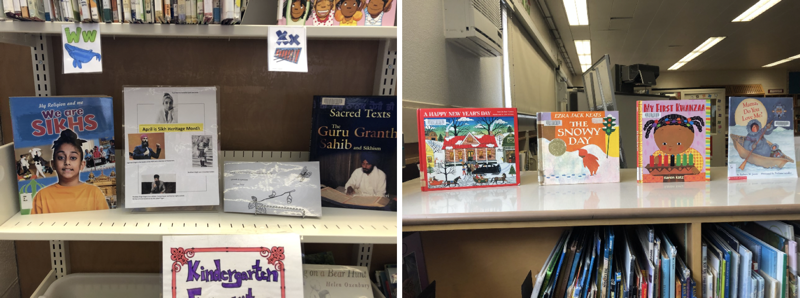
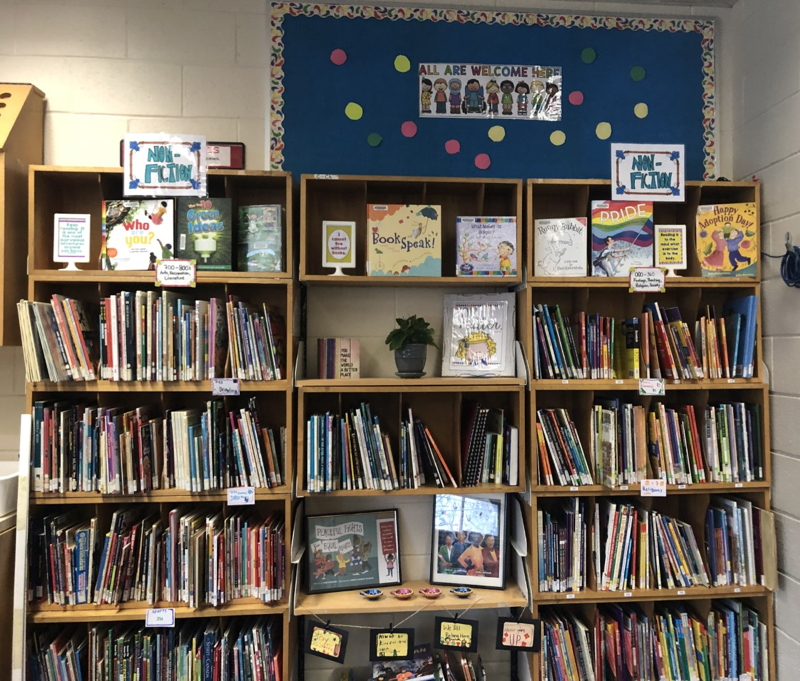
Presence of Student Voice:
As we designed our LLC through an equity lens that ensured diverse representation, the presence of student voice was an important factor. We wanted our students to feel a sense of connection and belonging when they came into the LLC. We knew that if we wanted to do this, then we would need to get our students to co-design some aspects of the space. We wanted them to have their work represented in their space. We had our students help us design signage, add art work to decorate our space, contribute to the student authors section and have their learning made visible on our walls. To guide us we asked the following questions:
- Who are we actually designing the space for?
- Who are the displays for?
- Are things at student reach and eye level?
- Can students see their work posted in our LLC? Do they feel a sense of belonging and connection?
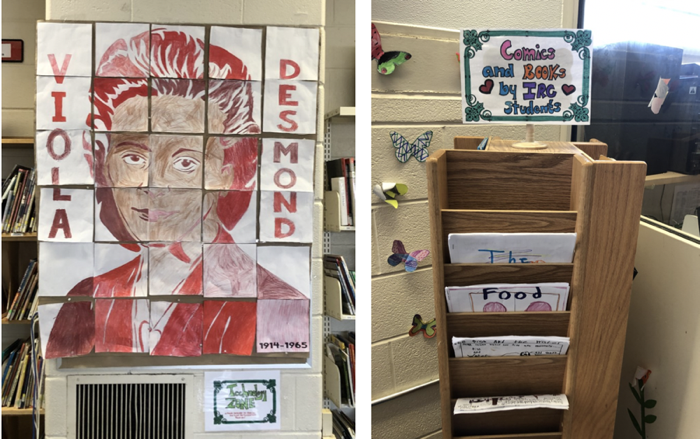
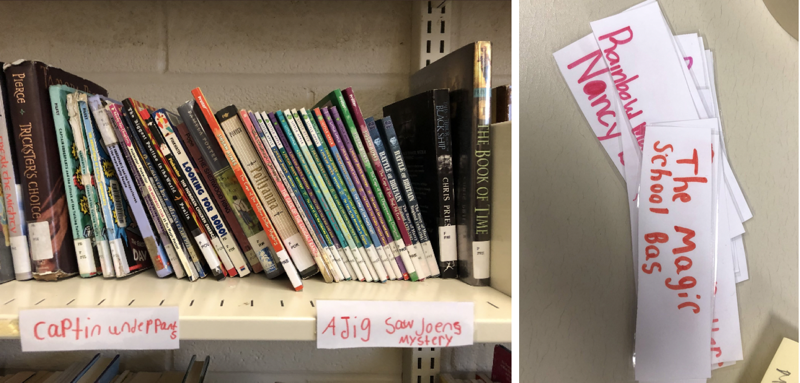
Reflecting On Our Journey
Our school libraries are important spaces. They are the biggest classrooms in our school used by all members of our school community. As Teacher-Librarians we are given the privilege to curate this important space and ensure that it is designed through an equity lens that ensures diverse representation. School libraries are transformative spaces and the learning and conversations that take place in them are pivotal to ensuring a more understanding, critical and inclusive future.
We have been incredibly fortunate to see some of the impact that the changes have had on our students. Recently, we asked our students the following question “What do you love about our library?” We were honoured and humbled by our student’s responses. All of our students’ responses are important for us as we think critically about the space we have designed. We were excited to learn that our students feel welcome in the space and that the books and messages that are posted are making them feel this way. We were also excited when a student picked up the book, I am Enough hugged it and said “I just love love this book so much. It’s just so lovely!” Her words were so important, she looks like the girl on the cover of that book. This exemplified for us, the important role of the LLC in our student’s lives and the incredible power of seeing yourself reflected and represented in your learning environment.
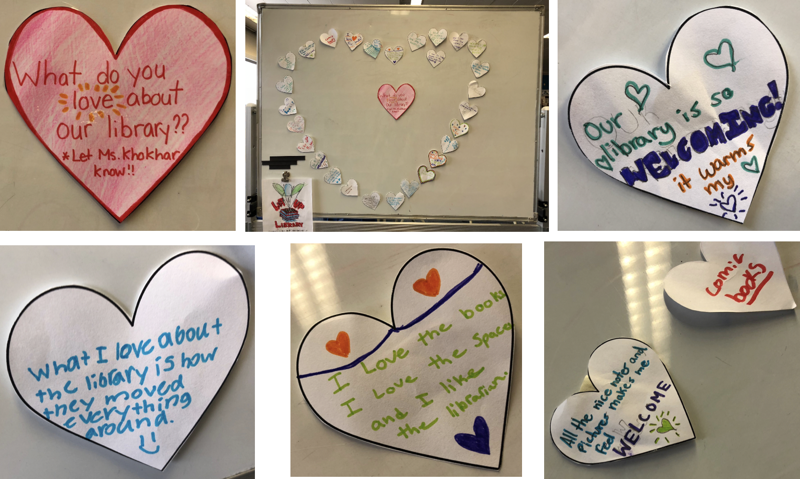
References
Harris, Violet (2007). In Praise of a Scholarly Force: Rudine Sims Bishop. Language Arts, 85 (2), 1-13.
Canadian School Libraries (CSL). 2019. Leading Learning: Standards of Practice for School Library Learning Commons in Canada. Accessed at: http://llsop.canadianschoollibraries.ca
Ontario Ministry of Education (2009). Realizing the Promise of Diversity: Ontario’s Equity and Inclusive Education Strategy. Accessed at http://www.edu.gov.on.ca/eng/policyfunding/equity.pdf
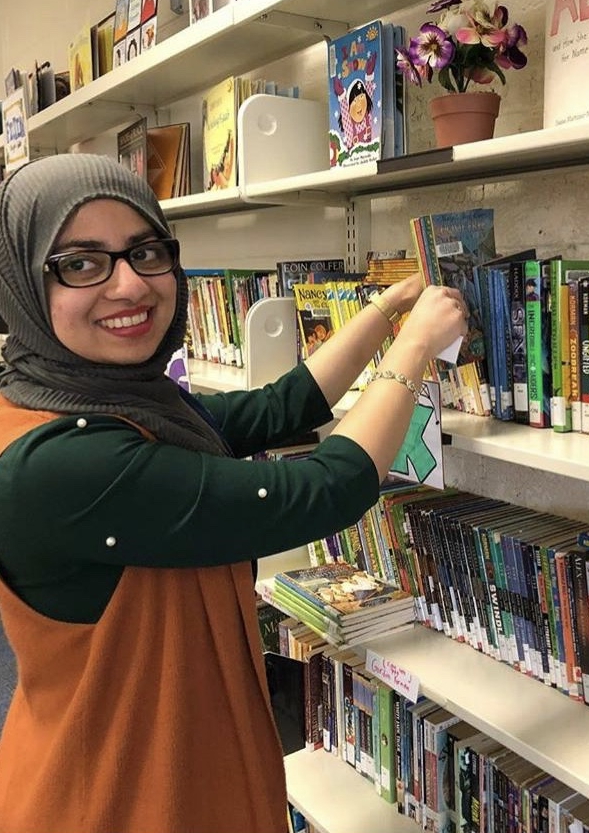
Rabia Khokhar is currently an LTO teacher-librarian at a downtown school in the Toronto District School Board. She is passionate about social justice and equity in the elementary years. She is particularly passionate about critically thinking about representation in children’s literature. She believes in the transformative power of the LLC in shaping school culture and the impact of sharing stories with students.